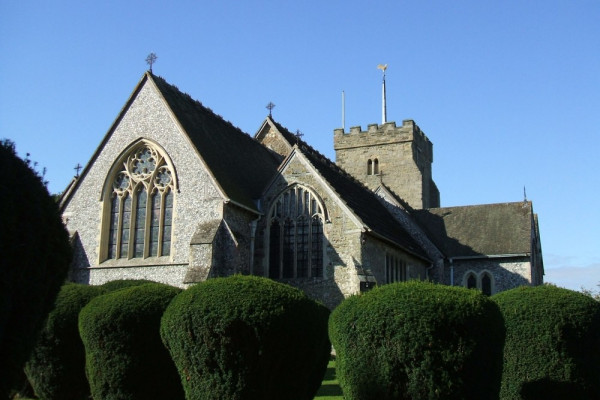Trail location - St. Peter's Church
In 770 CE, King Osmund of the South Saxons bestowed 1800 acres of land to the Lord of the Manor, Earl Warbald, to build a church dedicated to St Peter. A copy of the charter hangs in the foyer of the church today.
A stone structure was built on the site in 1250 but only an arch and two windows remain. The building was enlarged in the 14th century and the tower was added in 1450 to house eight church bells. The 15th century Parham Chapel is a wonderful example of the Gothic style of the period.
The flint work on the exterior of the church was added by the Victorians as part of a programme of major alterations in 1871 by the architects of the famous Woodard Foundation. Most of the stained glass windows are the work of celebrated Sussex artist Charles Kempe.
To the side of the church is a line of yew trees that demarcates a walkway through the churchyard. These trees were planted to commemorate Queen Victoria’s Golden Jubilee. The three-faced clock on the church was created to celebrate her Diamond Jubilee in 1897.
Renovations and improvements continue today: a new stone floor with underfloor heating was laid in 2008, along with new chairs to replace the pews.





